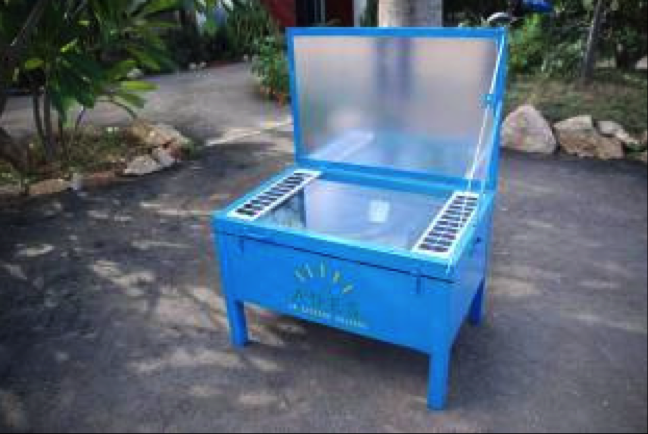 In Madagascar only 6% of the population has access to electricity and generally diesel generators are used for supplying energy. ADES (Association pour le Développement de l'Energie Solaire Suisse) developed a solar cooker (E-cooker) that both cooks and generates electricity. Solar panels are fixed to the glass lid of the solar cooker and the electricity generated is stored in a battery, which can power an LED lamp, a radio or a mobile phone. The aim of this project is to complete the development phase and then introduce the E-cooker gradually to the Madagascan market. The solar E-cookers will be locally produced in a metal workshop and joinery. During the implementation phase, the actual performance of the E-cookers and the levels of user acceptance will be assessed.
The mid-term objective is to produce and market 1200 E-cookers by the end of 2014, once the development phase has been completed. SEPS support is mainly linked to the monitoring and data validation activities to ensure a need-oriented and overall sustainable approach.
In Madagascar only 6% of the population has access to electricity and generally diesel generators are used for supplying energy. ADES (Association pour le Développement de l'Energie Solaire Suisse) developed a solar cooker (E-cooker) that both cooks and generates electricity. Solar panels are fixed to the glass lid of the solar cooker and the electricity generated is stored in a battery, which can power an LED lamp, a radio or a mobile phone. The aim of this project is to complete the development phase and then introduce the E-cooker gradually to the Madagascan market. The solar E-cookers will be locally produced in a metal workshop and joinery. During the implementation phase, the actual performance of the E-cookers and the levels of user acceptance will be assessed.
The mid-term objective is to produce and market 1200 E-cookers by the end of 2014, once the development phase has been completed. SEPS support is mainly linked to the monitoring and data validation activities to ensure a need-oriented and overall sustainable approach.
Projects with same technology
Solar Kiosks for the Diffusion of Solar Cookstoves in Micro-Enterprises and Urban Homes
This project aims to raise awareness about the viability and benefits of solar parabolic cookstoves via practical demonstration by street food vendors